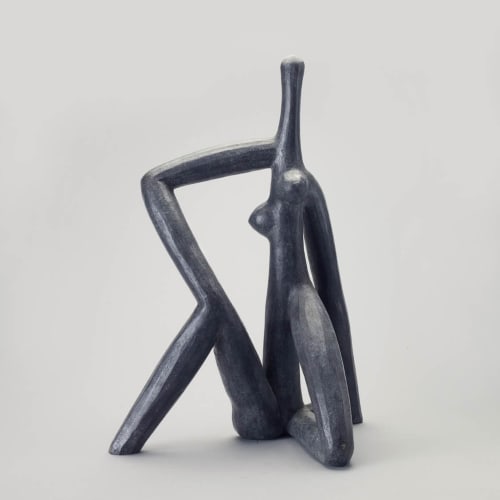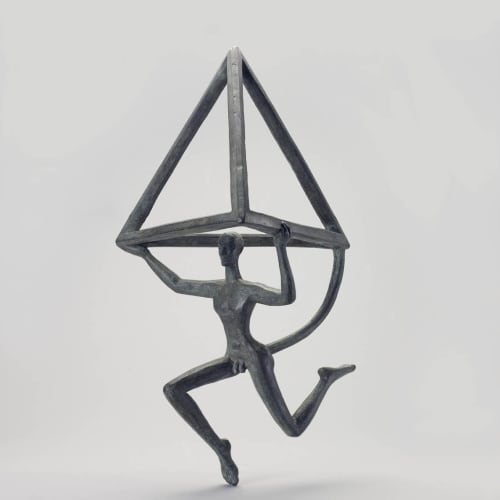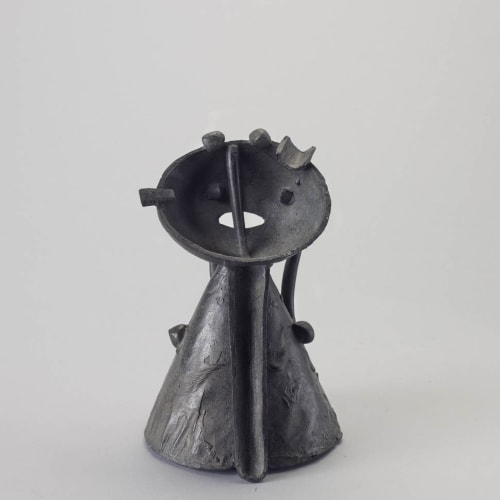Grosvenor Vadehra is proud to present an exhibition of bronze sculptures by Dhruva Mistry from the collection of Nigel Greenwood. These include important works that the artist made while living in London from 1987-1990.
Dhruva Mistry was born in 1957 in Gujarat, India. He began exhibiting his works while he was still a student at the University of Baroda in1974. Soon after, he was awarded a scholarship to attend the Royal College of Art in London. The alumni of RoyalCollege included well-known artists such as Henry Moore, Barbara Hepworth and David Hockney. Here Mistry met and integrated into the emerging generation of artists who went on to dominate art scene in London in the late 80s. In 1984 Mistry went on to become an artist in residence at Kettle's Yard Gallery with a Fellowship at ChurchillCollege, Cambridge, where he was exposed to works by important British sculptors and painters such as Gaudier Breszka, Jacob Epstein, Ben Nicholson and Henry Moore. While Mistry lived in London for sixteen years, it was these early experiences that influenced his work during the period under consideration (1987-1990).
Nigel Greenwood (1941-2004) was an influential gallerist at the time and played an important role in identifying emerging artists. He had spotted and nurtured several important artists at the time including Christopher Le Brun, Stephen Cox and Gilbert & George. He was also the one who spotted the work by Dhruva Mistry. He had two solo exhibitions of Mistry's works at his gallery. By the second one in 1990, Mistry had established himself as a force in British sculpture. He was commissioned to make many large public works and won several competitions in the field. Some of the large-scale prominent sculptures include the Sitting Bull in Liverpool, Diagram of an Object (Second State), Churchill College, Cambridge, The River and The Guardians in VictoriaSquareGardens in Birmingham. The latter is perhaps his most iconic work, depicting two stone guardians and the reclining nude in the fountain, dominating the main central square in the city of Birmingham.
A few of Mistry's sculptures in this exhibition like Hanuman, Spatial Diagram 2, Woman 3(Study for river), and Study for the Object are maquettes he made for larger public sculptures. Woman 3 is a study for one his most important large scale pieces called The River, which is located in Birmingham. This sculpture has been affectionately nicknamed 'Floozie in the Jacuzzi' by the locals. In this sculpture Mistry depicts a bold classical idealised form of a reclining female nude sitting in the middle of a large fountain. Whilst this is perhaps the most used form in sculpture, Mistry was able to add to some qualities to it that were truly his.
Mistry's Dialectal Image series is also included in this exhibition. This series differs from the other works as they are assemblages or collages of metal and forms. Despite being disparate objects they join to form a whole in this instance as in most of Misty works the human figure. The term 'dialectal' means a version of a language; in this instance it means a version of a sculpture or image. In this series there are strong references to tribal imagery, particularly the masked figures, which in turn are a reference to Picasso who was the joint founder of Cubism. Although cerebral, he was known to have been inspired by tribal art. The concept of Cubism was to incorporate on the two dimensional image the various images of an object just as the mind does. For example when we think of an apple we think of it from every angle not just as a flat image. When it came to sculpture Picasso turned to Julio Gonzales with whom they recreated the language of sculpture by re assembling or constructing an object rather than traditional sculpture in clay which is based upon on modelling. What Picasso and Gonzalez did was to revolutionise sculpture and allow artists such as Richard Serra and Anthony Caro to push the boundaries. Here Mistry is doing the same.
In 1997 Mistry returned to India and joined his alma mater in 1999 as the head of Sculpture and Dean in the Faculty of Fine Arts until 2002. This marked a turning point in Mistry's career as he sacrificed his career in the London art world. The return to academia enriched his sensibilities but resulted in less time for his work. At the same time a newer generation of ambitious younger artists began to dominate the burgeoning Indian art scene. This was followed by a stroke in 2008 which forced the artist out of action for a few years. However he still works and exhibits every year at the RoyalAcademy and continues to inspire next generation of sculptors at the University of Baroda.
Mistry's works have been included in several prominent collections. Different versions of his works, Reclining Figure and Seated Figure, are now on display at the DelhiUniversity campus. Commissioned by the Delhi Development Authority, the two pieces are rendered in bright, colours and textured with a polyester-resin finish. He was awarded the prestigious and Honorary CBE (Commander of the most excellent Order of the British Empire) in 2001.





